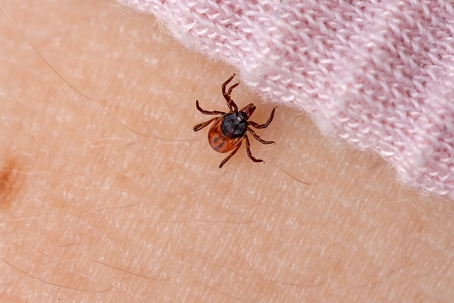Tick Bite Identification
Ticks are a common pest throughout the United States. They inhabit grassy areas and trees, and nature lovers have long since been wary of this pest. Anyone who has a lawn or an outdoor space, or enjoys hiking with their family and pets, should know how to identify a tick and its bites.
There are many summer pests out there, from mosquitos to spiders, to fire ants, that can bite people. This is why it is very important to be able to differentiate between these bites so that you can make sure to get the proper medical care when you need it.
Why are Ticks Dangerous?
Mostly, ticks would be considered harmless. Their bites may trigger an allergic response in some individuals but their bite isn’t life-threatening. Ticks become dangerous because they can transmit diseases from animals to humans - so you never know if it is a harmless bite or something potentially life-threatening.
It is important to see a doctor if you develop flu-like symptoms or your bite begins to look like a rash or lesion. The most common disease passed from ticks to humans in the Northeast is Lyme Disease, which can be fatal or cause severe long-term effects.
Ticks are also known for passing along the:
- Powassan Virus
- Rocky Mountain Spotted Fever
- Tickborne Relapsing Fever
- Tularemia
- And other diseases according to the CDC
Identifying a Tick Bite
A tick bite is often small, round, red, and circular. It is not raised or itchy like a mosquito bite. It doesn’t cause swelling, like a spider bite might. Ticks bite humans and feast on their blood, burrowing themselves into the skin. They’re often visible on the skin for about 10 days.
If you see an insect or part of an insect on your skin and a red circular area around it, it is likely a tick. It may look like a spot of dirt or even a splinter under your skin - that’s a clear sign of a tick bite.
Spotting Bites: Is it a Tick or a Spider?
Pest bites can be confusing. Tick bites typically showcase a circular red rash, sometimes with a target-like appearance, and can transmit diseases. Spider bites, on the other hand, often result in a central ulceration or a blister. Spider bites may cause more localized pain compared to tick bites.
Removing the Tick and Treating the Bite
It is recommended to remove the tick as soon as you notice it. However, it is a delicate job and you may want to go directly to an emergency room or medical professional and have them do it for you. Using tweezers, grip tightly and pull the insect out. It is important not to force it, twist it, or break it.
If the tick breaks apart in your skin or its jaw is crushed in the process, it may release even more toxins into your bloodstream. You want to do your best to remove the tick whole, place it in a tightly sealed ziplock bag in the freezer, and take the specimen with you if and when you seek medical attention.
How to Prevent Tick Bites
The best step towards prevention is education! Look at photos of various tick bites so that you can better identify your bug bites as you explore nature this summer. Research various ticks and commit them to memory so that you know to shake them off or avoid them when you see them.
If you’re a parent or you have pets that play in the yard, it is important to inspect your pets and children when they come inside. Ticks are easily spotted if you catch them quickly! They’re often just sitting on the skin.
Talk to your children about tick safety and train them to talk to you and show you any new things or bug bites on their bodies. Keep your pets groomed in warmer weather if they love to explore the outdoors. Fur makes it easy for all sorts of pests to latch onto and travel - and it makes tick bites harder to spot.
You can also reduce the worry of tick bites by keeping your yard maintained. If you have grass, keep it short and mowed, and be sure to keep your kids and pets out of any wild grassy areas without supervision. You can also have your yard treated and eliminate all of your worries.
Call Commonwealth Exterminators at (434) 848-9800 and speak to an expert about our professional pest maintenance services!

